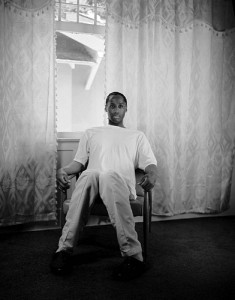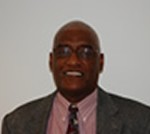Media Watch Exclusive: Reports on Abuse of GLBT Youth in Detention Don’t Surprise Social Work Experts
Several news organizations have recently reported on rampant abuse of lesbian, gay, bisexual and transgendered young people in the juvenile justice system.
However, for some National Association of Social Workers (NASW) members, these harrowing tales of LGBT youth being verbally and physically assaulted on a daily basis and even raped by other inmates and staff are nothing new.
Social workers have known about this problem for years and tried to end abuse by improving training of staff at jails, prisons and other youth facilities around the nation.
“Yes, it’s an ongoing problem — it’s been a problem for decades,” said social worker Caitlin Ryan, PhD, ACSW, director of the San Francisco State University Family Acceptance Project, an initiative that studies the impact of family acceptance and rejection on LGBT youth. “It really has not been addressed at the systemic level.”
“Although there are wonderful guards and staff in every facility, there are some guards and staff with their own agendas and prejudices,” said Robin McHaelen, MSW, a social worker and director of True Colors Inc. Sexual Minority Youth and Family Services in Hartford, CT.
“When a staff member calls a youth names or harasses them, or equally importantly fails to intervene when the youth is being harassed because of their orientation or gender, other youth learn that is acceptable behavior — it escalates from there.”
Media coverage of sexual abuse of juveniles in detention picked up in January when the Justice Department released its first report ever on sexual abuse of youth in detention centers. That report said 12 percent of youth in state-run, privately run, or local facilities have been sexually victimized.
However, later reporting has focused on the fact that abuse of LGBT youth in detention occurs at a much higher rate. The Nation, the oldest magazine in the United States, in June ran this article about violence against LGBT youth in the juvenile justice system. And the Juvenile Justice Project of Louisiana on July 1 released this report about mistreatment of LGBT youth in state facilities.
“When I was first locked up, when I was first raped, I was a terrified 12-year-old boy,” said Troy Erik Isaac, 36, who was sexually assaulted repeatedly while serving time in juvenile and adult facilities. “I had never been violent and I was different — I was skinny and effeminate.”
Isaac was mentioned in this article that appeared in the New York Review of Books in March and was interviewed by Fox Television in Los Angeles (to watch that segment click here) this year. He was in and out of jail for 20 years but created a community service organization and in February testified before Congress about sexual abuse of inmates.
Social workers are working to sexual and other abuse in both adult and juvenile detention facilities but much work needs to be done said Melvin Wilson, MBA, MSW, LCSW, manager of NASW’s Center for Workforce Studies and an expert on justice issues.
“The whole issue of sexual violence in the correctional system, including adult and juvenile facilities, is at epidemic proportions.”
NASW works closely with groups that seek to end victimization of prison inmates, becoming part of the dialogue and creation of action plans, Wilson said.
Ryan co-authored “Serving LGBT Youth in Out-of-Home Care.” That book, which was published by the Child Welfare League of America as part of the association’s best practices series and Model Standards Project, provided the first police and practice guidelines to improve services for LGBT youth in custodial care.
Ryan and McHaelen have no illusions that mistreatment of LGBT youth will change soon. Part of the problem is that detention centers are often geared toward being more punitive than rehabilitative, Ryan said.
McHaelen said anyone who works with youth should get initial and then periodic training on how to be more sensitive to the needs of LGBT young people.
“Whatever the bias we are talking about — heterosexism, classism, racism, gender bias, etc. — each of us has internalized these prejudices to one degree or another,” she said. “When unexamined or unresolved, these biases can’t help but negativey impact our work.
“Unfortunately, the direct care staff with the most face-to-face interactions with youth are often the staff with the least amount of this kind of training. In my opinion, policies and procedures are necessary — but not sufficient in creating safe environments for LGBT youth.”
What can Social Workers do to Help?
Robin McHaelen offered other social workers this advice on helping GLBT youth:
At the individual level: When you see abuse — intervene! Everywhere and every time. Make sure you have done your work to separate personal views from professional responsibilities.
At the family and group level: Start by getting yourself trained on the unique needs and concerns associated with sexual and gender minority youth and their families or caregivers. Then find ways to include and work with families and caregivers. A key factor in the outcomes for LGBT youth is the response of the youth’s family to their coming out. Families very often become more affirming over time. Look for ways that you can help them move along the continuum from rejection to ambivalence to acceptance and affirmation.
Finally, at the system’s level: Ask about your agency’s policies and procedures. Are they inclusive of LGBT youth needs? If not, what can you do to get them changed? Then, find out what is happening at the state and federal level and look for ways to advocate on behalf of this very vulnerable population. For example: Did you know that lesbian, gay and bisexual people can be fired in 30 states? And that transgender folks can be fired in 37 states. Is your state one of the 13 that include gender identity and sexual orientation or one of the 37 who don’t? At the Federal level, current concerns are marriage equality and the repeal of the discriminatory “Defense of Marriage Act” legislation as well as the removal of Don’t Ask, Don’t Tell which now results in the (military) discharge of thousands of American patriots.
NASW supports equal treatment for all, including members of the LGBT community. To find out more click here to visit the association’s Diversity and Equity Web page.
| Leave A CommentAdvertisement
4 Comments
Leave a Comment
You must be logged in to post a comment.







A great article on a very important topic.
I’m afraid to say that this goes on with all youth in the juvenile justice system, especially here in Ohio. And again, the guards do nothing!
I have not heard any of this happening in the detention center here in Yuma, AZ. But then again.. What happens inside the bars stays inside… I have worked with many of this teens and I have not heard any negative comments towards the guards. I hope this is completely true and are not hiding what is really happening.
I am not surprised. The GLBT population of teens have a very tough time on the outside. There has to be more complex problems inside and a lot of obscurity.
This just came over on advocate.com 7-9-2010. Very interesting reading and backs what I am talking about. http://bit.ly/clxhP3